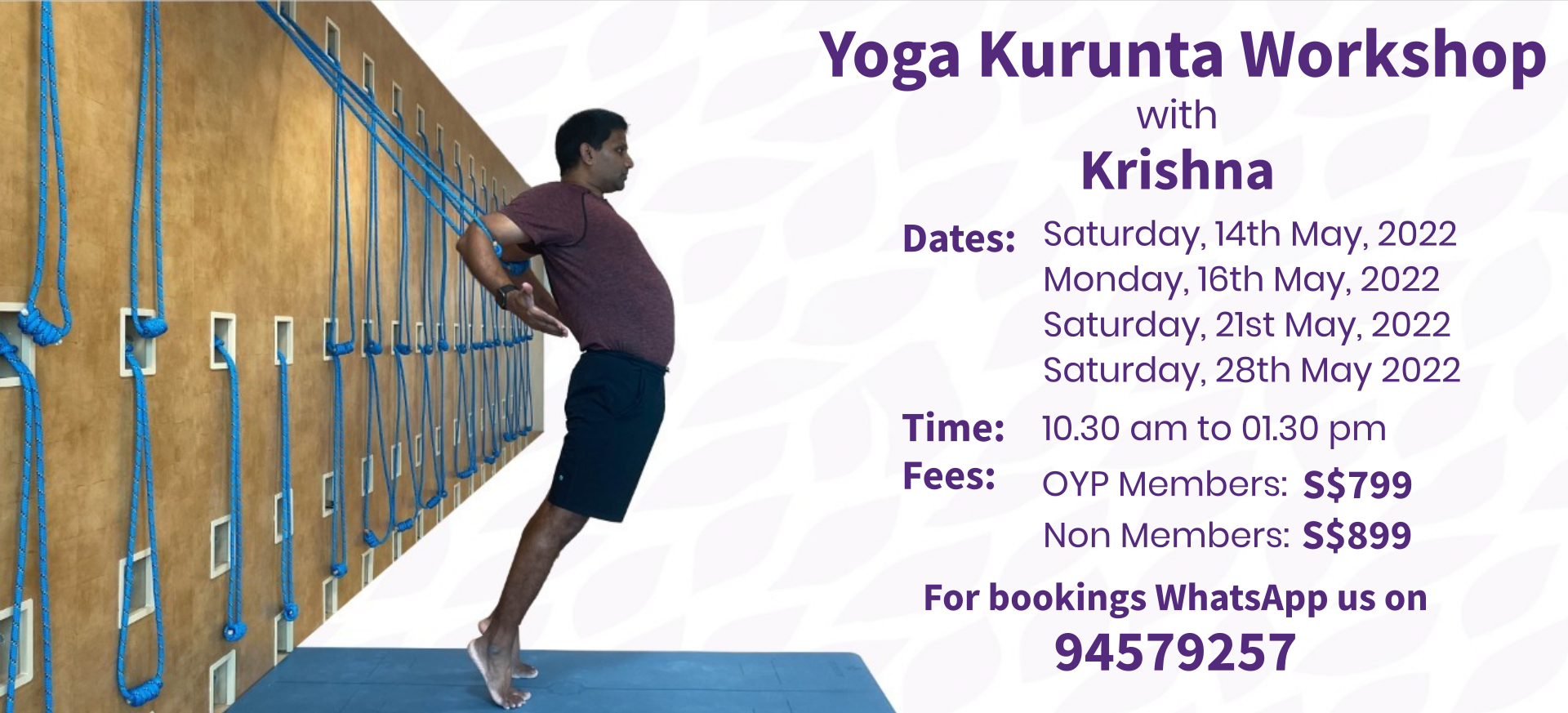
Yoga Kurunta (Koronta, or also known as Yoga Rope Wall) is a practice that was initially introduced by T. Krishnamacharya in his yogashala in Mysore, Karnataka, India. The initial postures were published in the book Yoga Makaranda. Later on, BKS Iyengar, having been inspired by his Guru Kirshnamacharya, developed a deeper practice on yoga Kurunta in Pune. Iyengar in his later years, used Yoga Kurunta as therapeutic, strengthening and alignment tool. In her book “Yoga - A Gem for Women”, Gheeta Iyengar gives a thorough explanation of the first yoga Kurunta postures ever taught to women. Yoga Kurunta aims to allow the body to be suspended as well as supported and be able to create different postures without injury. It is a practice were we use ropes which have been attached to a wall and they allow freedom of movement, stability, flexibility and body awareness.
COURSE SYLLABUS
1. HISTORY OF YOGA WITH ROPES
2. BENEFITS AND CONTRAINDICATIONS
3. YOGA KURUNTA SEQUENCING - DO'S & DON'TS
4. WHAT WE COVER IN POSTURES
5. HOW TO USE ADDITIONAL PROPS IN YOGA KURUNTA
6. HOW TO SET UP A YOGA KURUNTA WALL
1. HISTORY OF YOGA WITH ROPES
Yoga Kurunta (also known as Yoga Rope Wall) is a practice that was initially introduced by T. Krishnamacharya in his yoga shala in Mysore, Karnataka, India. The initial postures were published in the book Yoga Makaranda. Later on, BKS Iyengar, having been inspired by his Guru Kirshnamacharya, developed a deeper practice on yoga Kurunta in Pune. Iyengar in his later years, used Yoga Kurunta as a therapeutic, strengthening and alignment tool. In her book “Yoga - A Gem for Women”, Gheeta Iyengar gives a thorough explanation of the first yoga Kurunta postures ever taught to women. In this module, we will explore the ancient as well as modern origins of this practice and how we can develop this tool further as yoga teachers.
2. BENEFITS AND CONTRAINDICATIONS
• Why Invert the Body?
• Gravitational Effects
• When and How to Hang
• Cautions and Contraindications
3. WHAT WE COVER IN POSTURES:
• Forward Bending
• Back Bending
• Spinal Twisting
• Lateral Stretching
• Balancing
• Inversions
4. HOW TO USE ADDITIONAL PROPS IN YOGA KURUNTA
We will learn the specific use of the following props and infinite creative combinations:
• Use of Chairs
• Use of Blocks (Wooden, Cork, Foam)
• Use of Yoga Mats
• Use of Belts
5. HOW TO SET UP A YOGA KURUNTA WALL
• Essential Elements
• Basic Measurements
• How to adjust height for different type of students
• Type of Materials you can use for a Yoga Kurunta Wall
Q & A
Additional benefits of Yoga Kurunta include developing confidence and letting go of fear that certain movements on the body or particularly difficult postures. The body inversion helps :
• Reduce back pain • Increase mental awareness and concentration
• Increases digestive power and regulates elimination
• Helps detoxify the body as the lymph nodes and blood are purified
• Elevates mood, reduces depression and improves quality of life
What You can expect:
To practice with partners and learn how to modify for your body. Learn about special topics including: overview of the Central Nervous System, Parasympathetic/Sympathetic Nervous System and the relaxation response how to adapt the practice for beginners, intermediate, and special level, including a brief introduction on how to modify your practice for back issues, Anatomy of the spine, what to look for and avoid After successes full completion of course will receive Basic certification.


